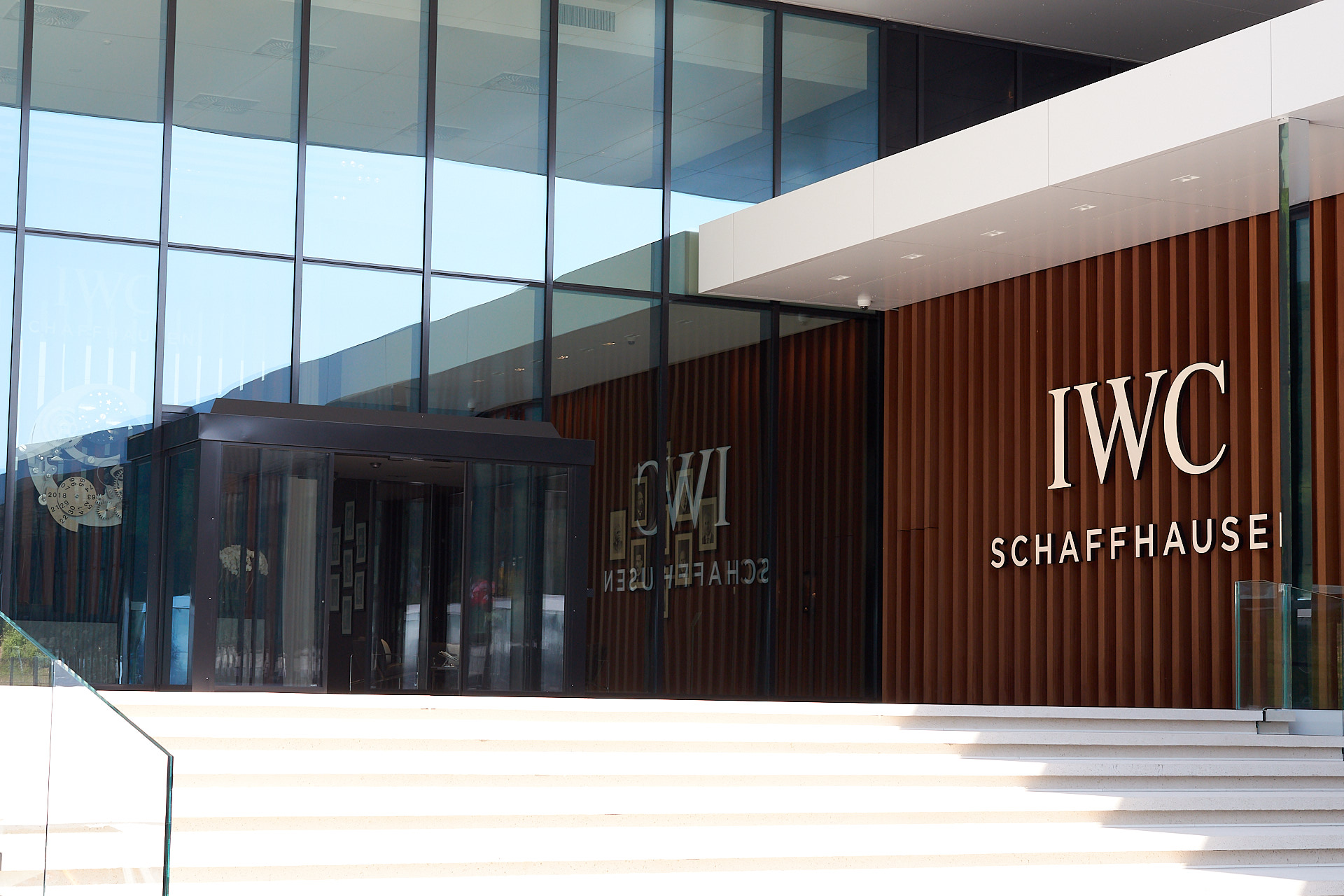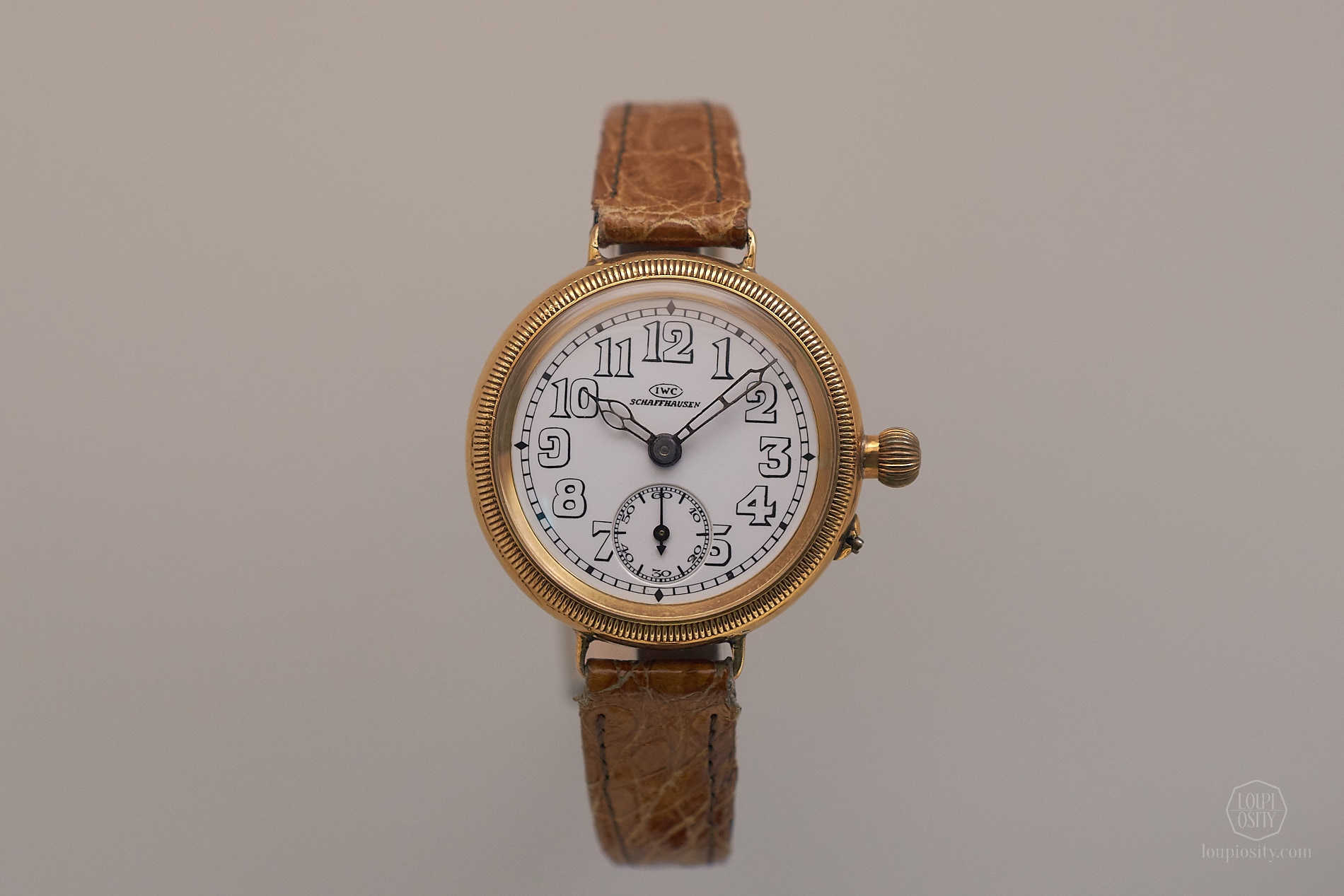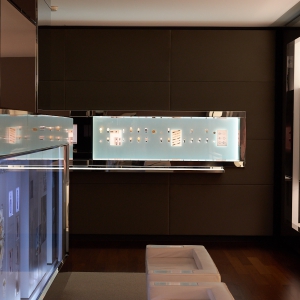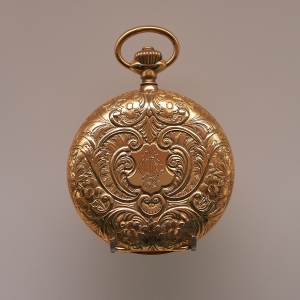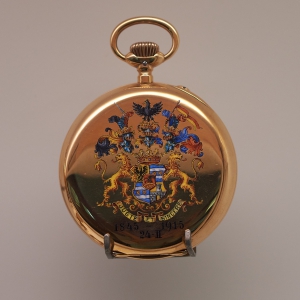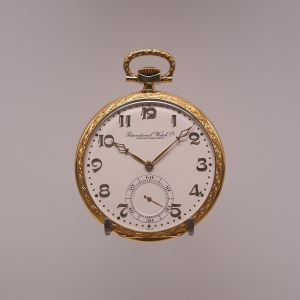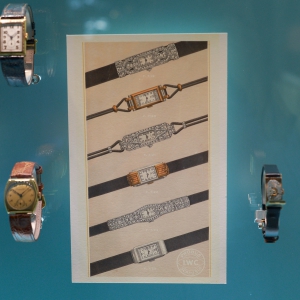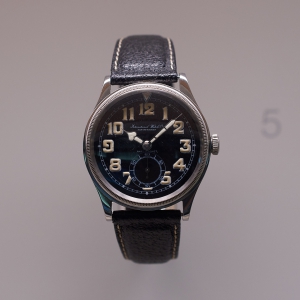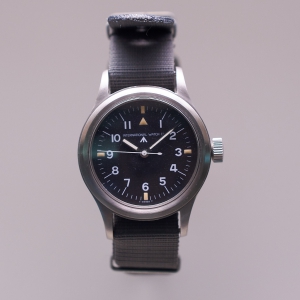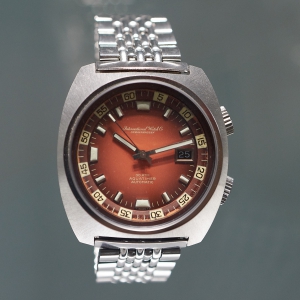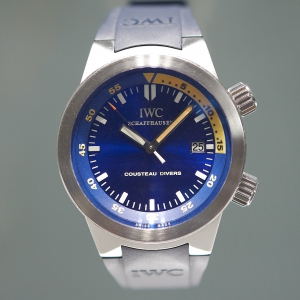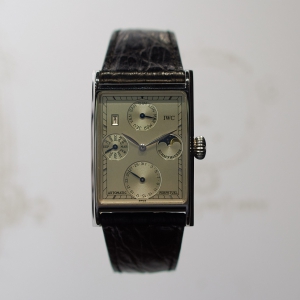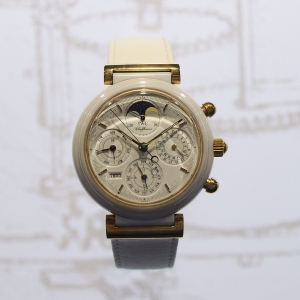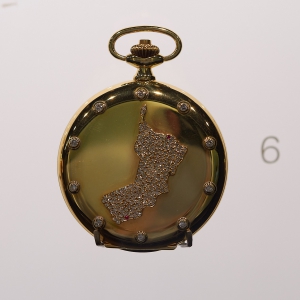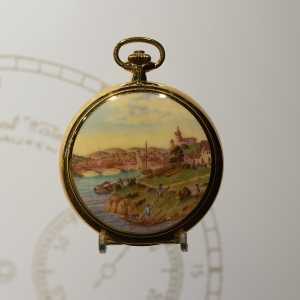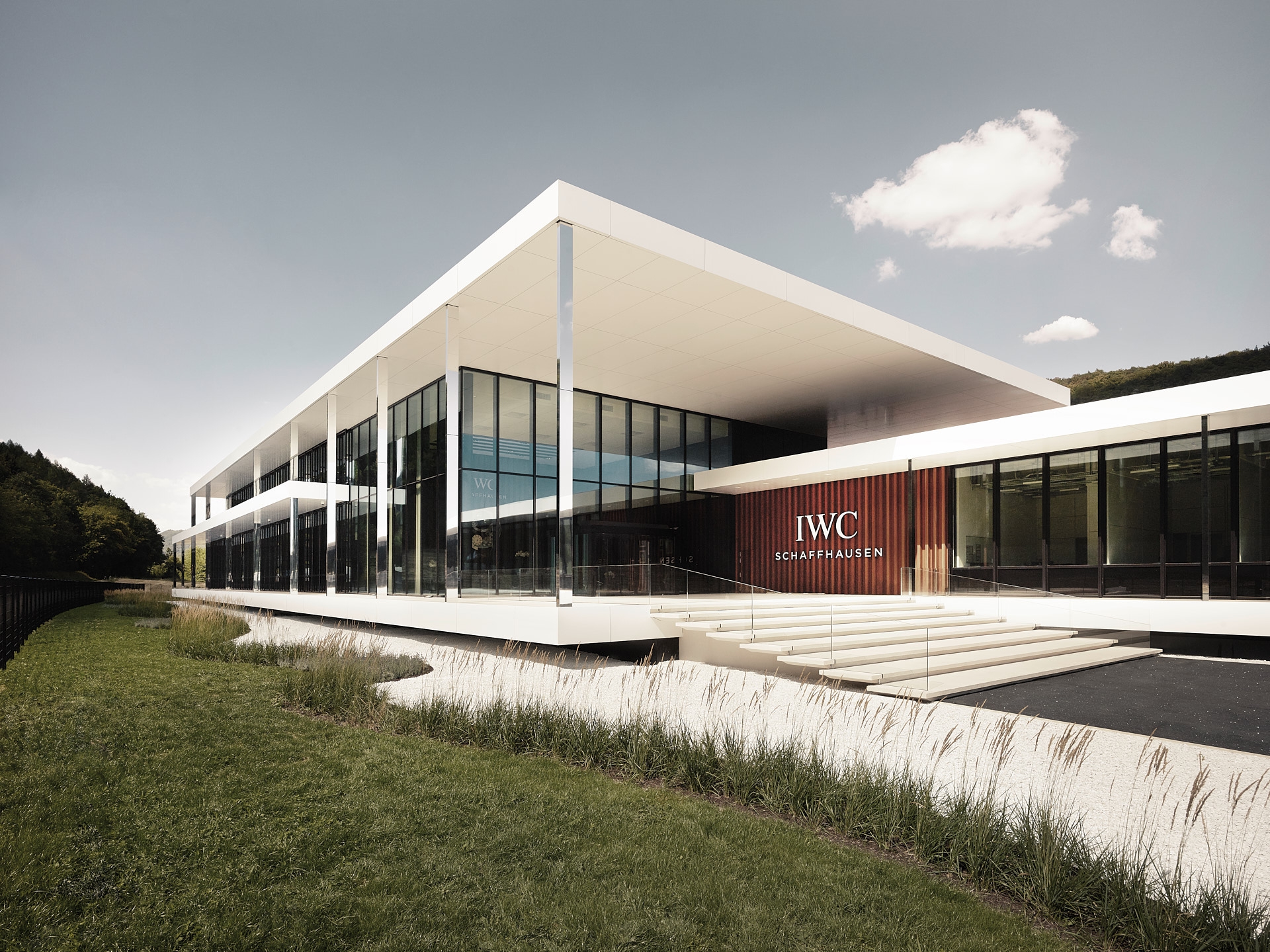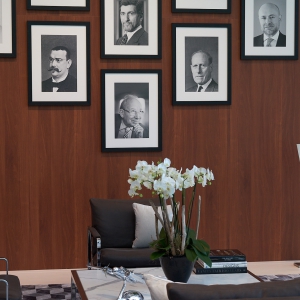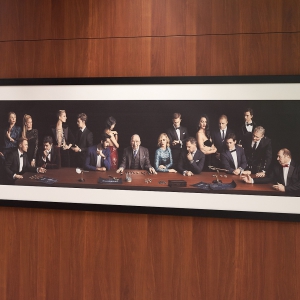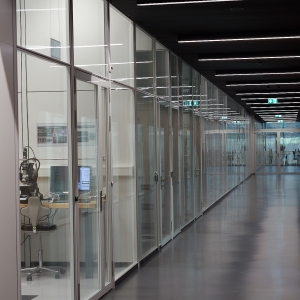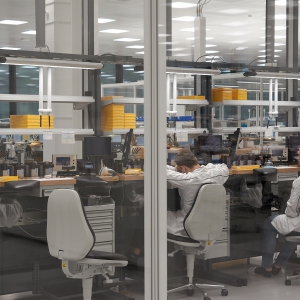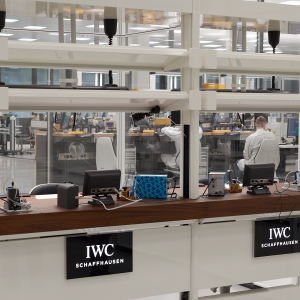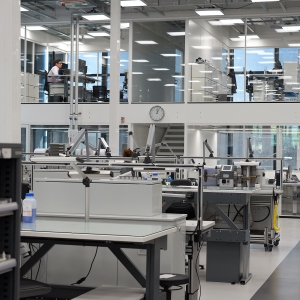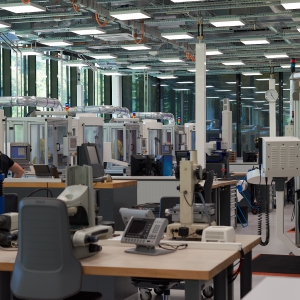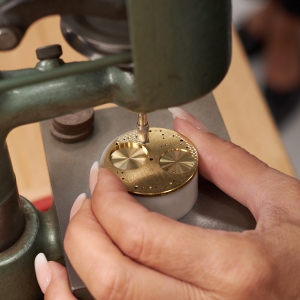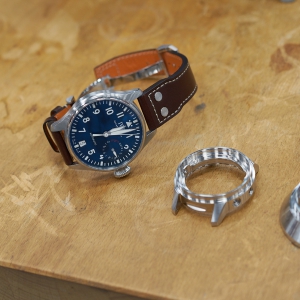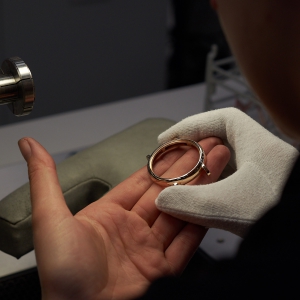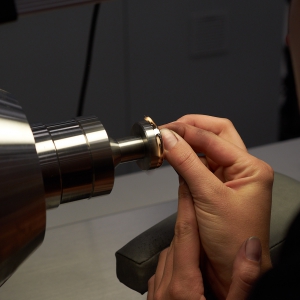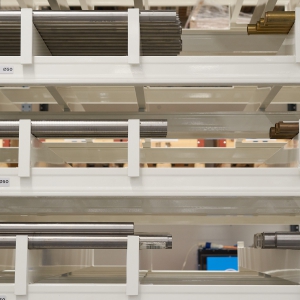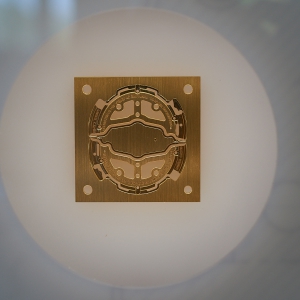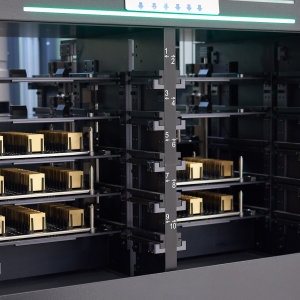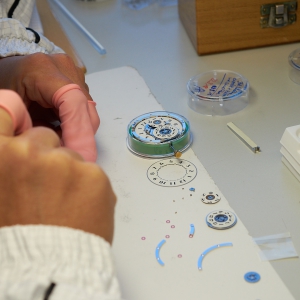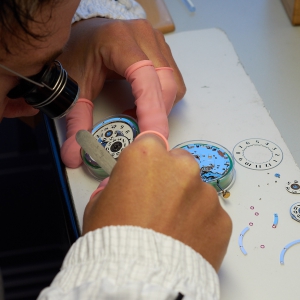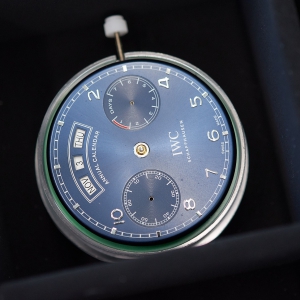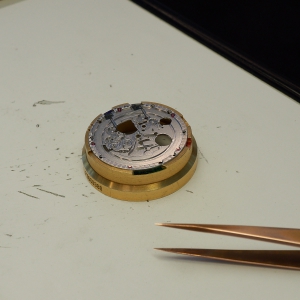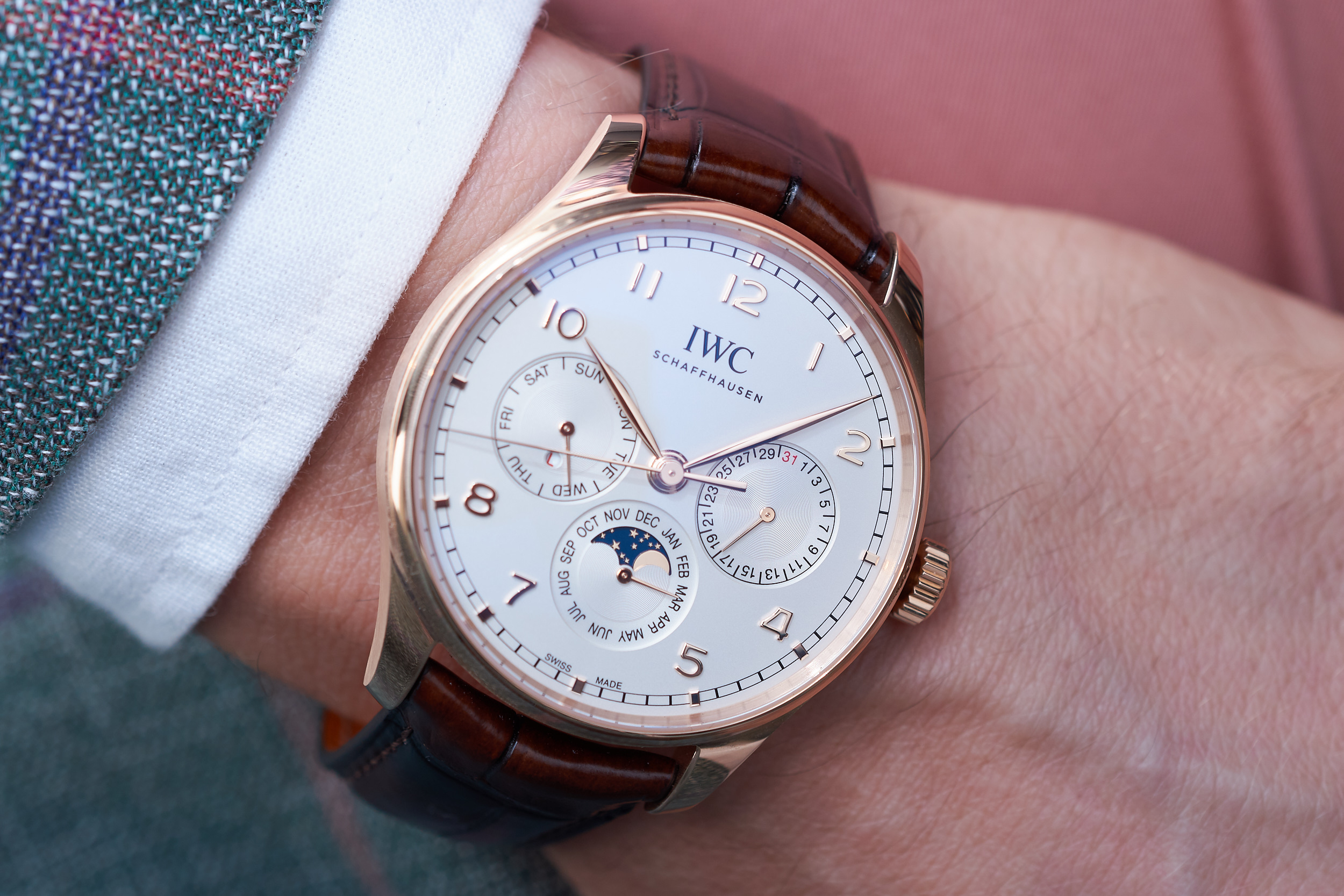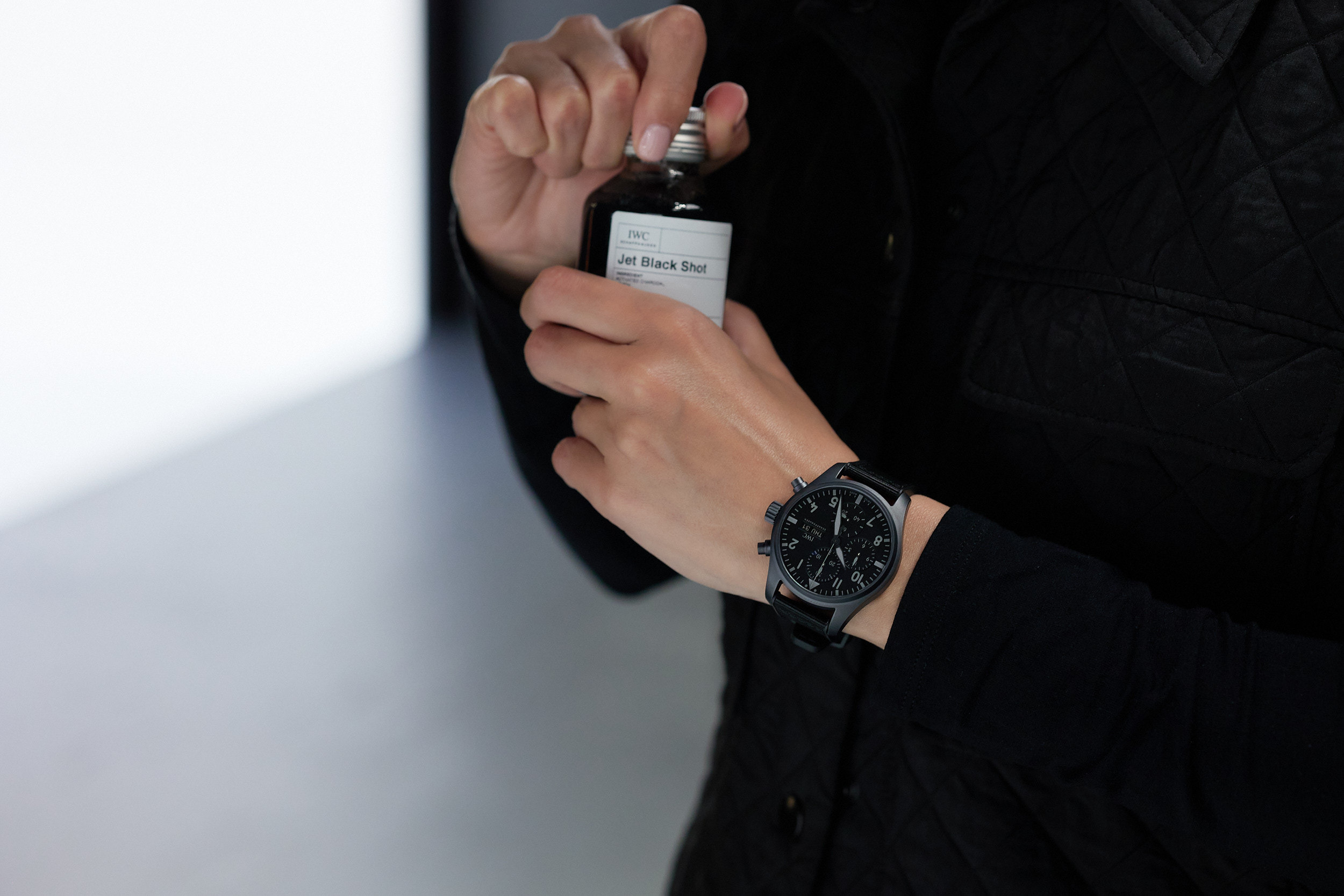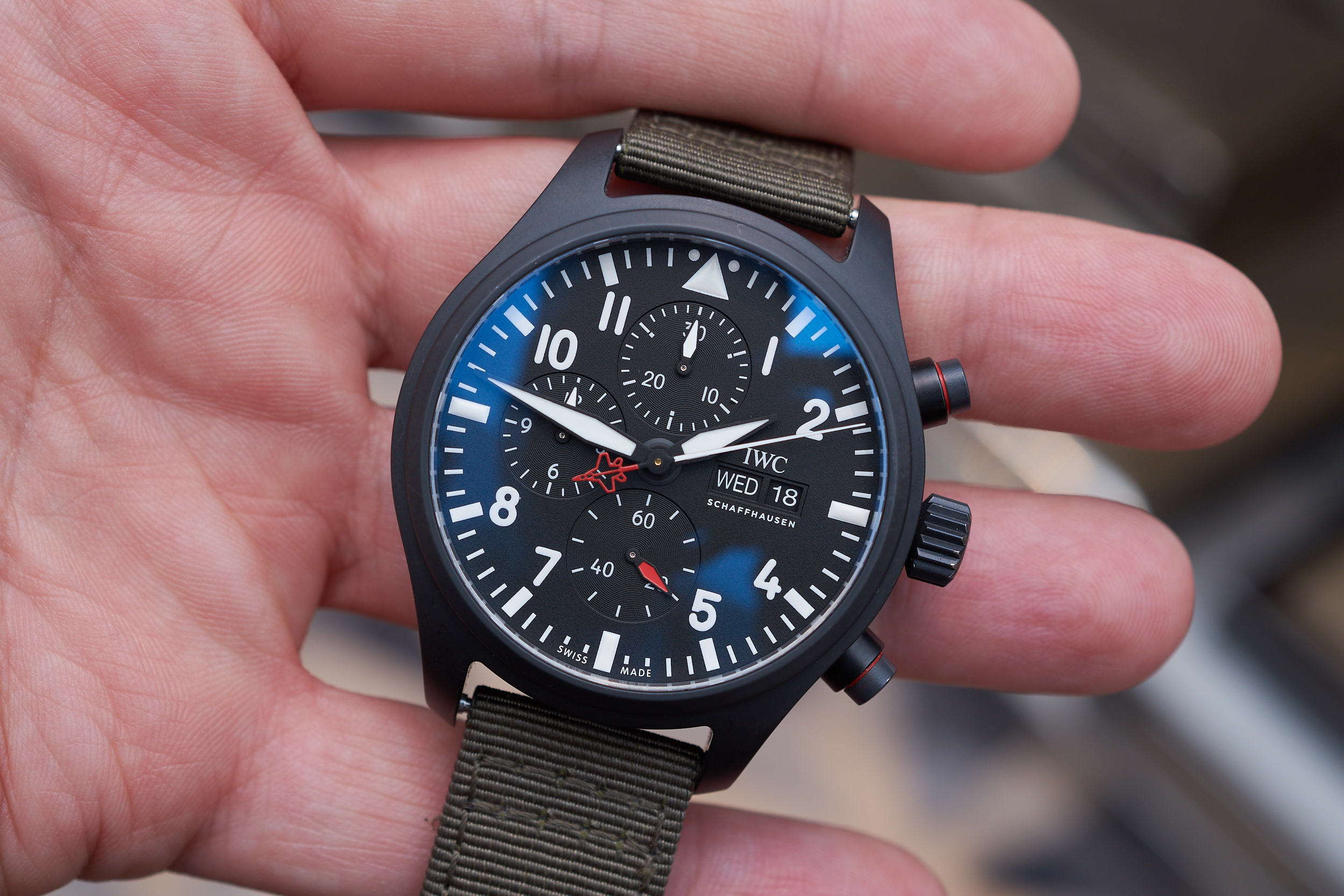Following the launch of the exceptional anniversary collection and the Pallweber tribute watch at the SIHH, IWC went on celebrating its 150 years of history with a beautifully designed Manufakturzentrum. Last week we saw the recently inaugurated facilities from the inside as well as from a bird’s-eye perspective.
The new production sanctuary is a milestone for IWC. They’ve been in Schaffhausen for one and a half centuries and have brought fame to the town and canton, whose name has adorned IWC dials for most of its history. The company has been among the largest private employers of the region; no wonder that the pride extends to the local communities too.
Inaugurated on 27 August 2018 in the presence of CEO Christoph Grainger-Herr, legendary watchmaker of the brand Kurt Klaus (who designed the Da Vinci perpetual calendar in the 1980s too), the Mayor of the City of Schaffhausen Peter Neukomm and the District President of the City Schaffhausen Christian Amsler, the 13,500 square metre production facility shows the strong faith of the owners and supporters in the forthcoming decades.
We were invited to discover their new pride and the region on this occasion.
Why Schaffhausen
Before the American Florentine Ariosto Jones and his business partner Charles Louis Kidder registered the International Watch Co. in Schaffhausen in 1868, they had carefully looked for a place that could satisfy their very specific requirements. The two gentlemen were active participants of the Second Industrial Revolution in the US during the second half of the 19th century. Watchmaker Mr Jones dreamt about serving the local market’s increasing need for quality timepieces with products assembled in the US, but produced by the cheap, specialised labour in his own industrialised plant in Switzerland. Pursuing his goals, he convinced Charles Louis Kidder to commit to the case. Their checklist for the right location included things like appropriate infrastructure for transporting the goods, sufficient electricity to feed the industrial processes, plenty of qualified manpower and an open business environment.
The Schaffhausen region was heavily devastated during the Thirty Years’ War (1618-1648) and had a hard time recovering from its losses. It took over 200 years, but thanks to influential local patriots like Heinrich Moser the little 800 year-old town embarked on flourishing once again. Together with fellow businessmen, Moser pushed to invest in infrastructure, such as the railways, a steamship company and the largest hydroelectric plant of the time in Switzerland. He also realised that Schaffhausen could benefit from Florentine Ariosto Jones’ plan, who was not particularly welcome by the independent watchmakers in the Geneva area and found everything he searched for in the East-Swiss location. IWC first rented an industrial building from Moser, then hired architect G. Meyer to build the ‘old factory’ on land purchased from Moser’s hydroelectric company. It opened in 1875 and became a landmark of the city. Today, the extended building includes the IWC Schaffhausen Museum, the high-complication workshops and other servicing units.
This year the museum has a special ‘150 Years of IWC’ exhibition too. Rare pocket watches (like the Pallweber pocket watch with the Savonnette case from 1886 or the Lépine pocket watch), pilot watches made for the German Air Force or the Royal Air Force, examples of famous complicated watches (like the Il Destriero Scafusia, or the early Da Vincis), prototypes (the GST Deep One for example) and many more are on display.
Surroundings
Throughout the 150 years, IWC have had an influence on their surroundings, but the scents of Schaffhausen have also changed the character of the company.
Prior visiting the plant, we were lifted above Eastern Switzerland by an almost 80 year-old Ju-52 operated by Ju Air. The airbase is near Zürich in Dübendorf, which has been a military base since 1914, although no fighters are grounded here since 2005. Ju Air has been flying the last vintage Junkers Ju-52s from here since 1983. Looking down onto the area from an old-timer like this was an incredible experience. Check out the video below for a little insight!
I have been in Schaffhausen a few times but never in the fantastic garden of the former Benedictine monastery. Kloster Allerheiligen (All Saints Abbey) was established by Count Eberhard of Nellenburg and constructed in the Romanesque style between 1049 and 1064. Thus the church is the oldest building in Schaffhausen. In around 1150, Abbot Ullrich initiated various developments including the cathedral tower, the convent buildings, the monastery gate and the hospital and the novitiate around what is today the herb garden. The garden even served as the cemetery for privileged persons between 1577 and 1874 before receiving its current utilisation.
After a delicious lunch in the Wirtschaft Zum Frieden restaurant close by, we just followed the mesmerising scents and approached the IWC building through the garden, which is next door. As we heard, the garden is the place where people from IWC hang out too for a refreshing walk during the day.
A few kilometres to the North, the new Manufakturzentrum stands in equally picturesque scenery.
Inside the Manufakturzentrum
Florentine Ariosto Jones and Charles Louis Kidder came to Switzerland to infuse Swiss watchmaking expertise with the new production processes. Having seen the impact of the industrial revolution, they smelled business in raising the production numbers and the efficiency by restructuring traditional watchmaking processes. In many ways, they innovated and Schaffhausen was a good partner in this.
With the new Manufakturzentrum, which intends to bring all production phases of the movement components and the manufacture movements under one roof and optimise processes, IWC is following in their footsteps.
The new facility is huge, spanning an area over 13,500 square metres. You can immediately realise that factors such as modernity, functionality and harmony with its workers and the environment have all shaped its design. The foundation stone was laid by Georges Kern back in 2014, but due to the consequences of the strong Swiss Franc the project got postponed. Eventually, the CHF 42m construction resumed in late 2016 and took 21 months to complete. The building has become a second home for over 230 employees, which represents an approximately 60% occupancy rate, giving plenty of space for expansion in the future.
Even though it’s a large factory with plenty of clean areas, it has a welcoming and warm character. With the white double-decker roof, the black framed glass facade and the dark brown wooden inserts, the entrance looks more like a beach house veranda than the main gate of a manufacture. The duality between a professional hi-tech workplace and a home-like environment continues inside – surrounded by the modern machines and workbenches you never miss the point that you’re here to contribute to raising IWC, but you can love the place meanwhile, right?
‘… the building has more to offer than just optimal conditions for production and excellent working conditions for our employees – it also embodies the spirit of the IWC brand and allows visitors from all over the world to see up close how our manufacture movements and cases are produced.’ – said Christoph Grainger-Herr at the opening. In fact, during the design of the building and the production flow they studied German car manufacturers on how they let visitors engage with the production. Foyers and workstations are laid out in a way that allows maximum visibility of a good chunk of manufacturing steps and even some controlled interaction. IWC wants to use these to connect to current and potential IWC fans and increase their bond to the brand.
The Manufakturzentrum brings production of movement components and cases in a single location. Most of them are produced in an automated manner by CNC machines and utilising robots. These are laid in sequence in order to increase efficiency. Surface treatments and complicated finishings are also carried out in the building before composing assembly kits (called ébauches). These are sent to the final assembly and tests.
The new building is a little bit like the brand itself: modern, crisp and bold. It opens a new chapter in the long happy marriage of the company and the city of Schaffhausen. Although primarily an industrial site, it is an attraction in itself.
Photo credits: IWC Schaffhausen, Loupiosity.com.
All registered trademarks are property of their respective owners.
All rights reserved.

